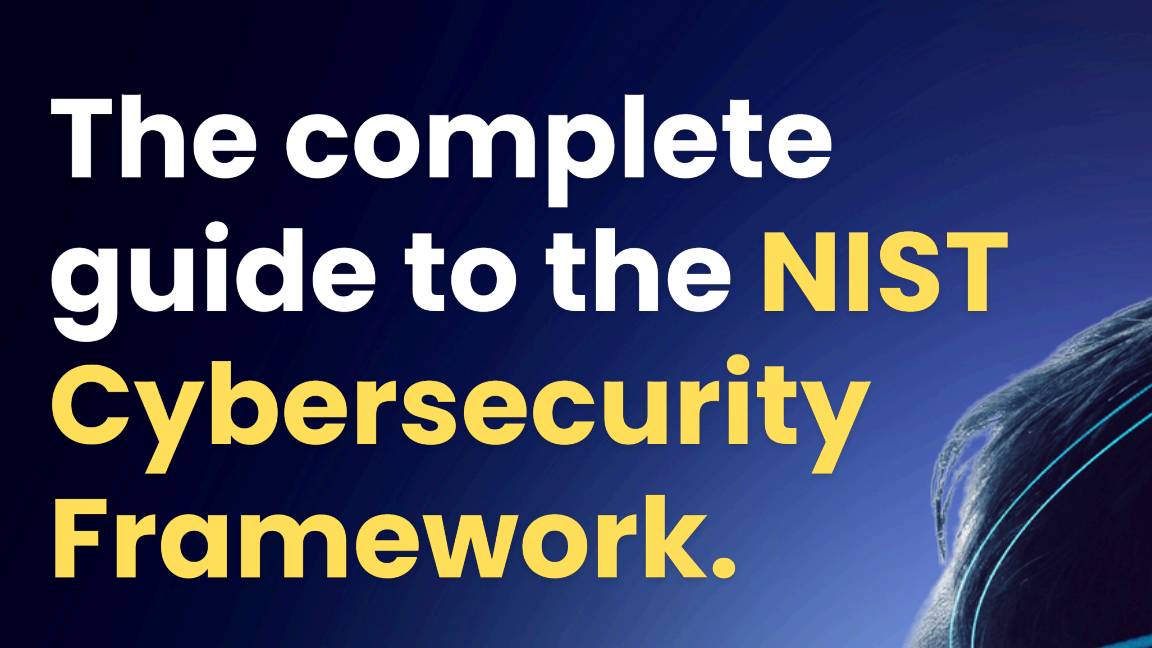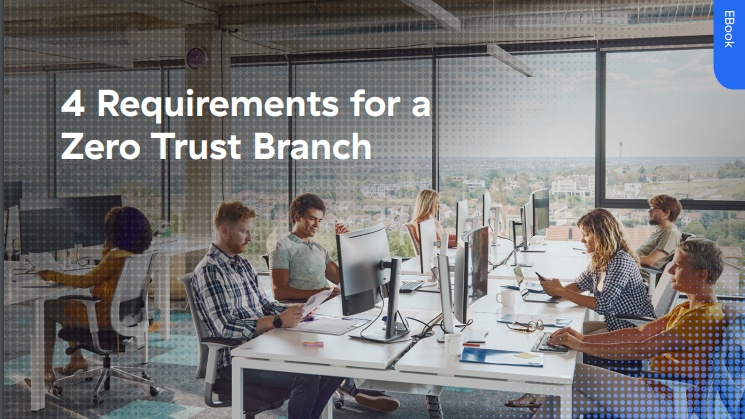Achieving Trusted Access at your organization
Take a zero trust approach to authentication by verifying employees’ identities and device health without compromising convenience


The eerie inevitability of a cyber security incident has led to many organizations not only considering the merits of a zero trust approach but also implementing a strategy at pace. Attacks can, after all, come from anywhere and giving your employees the benefit of the doubt – even for a fraction of a second – could prove devastating if the cards don’t line up. Insider threats are one thing, but malice doesn’t have to be a factor and most employees can jeopardize a company’s security posture without knowing or meaning to.
With the zero trust philosophy continuing to evolve, Trusted Access has emerged as a primary weapon in an enterprise’s defensive arsenal, particularly with companies like Jamf working this into the heart of their service. Trusted Access, which combines several workflows into one, is particularly useful in the era of the distributed workforce and hybrid working, with employees and contractors scattered across many different locations – and using multiple kinds of devices – including laptops, tablets, and smartphones.
Many enterprises are also increasingly gravitating to Apple hardware, thanks in part to the manufacturer’s Apple at Work program. The reasons are manifold, but Apple’s built-in security features certainly go some way to appealing to enterprises. In 2021, Apple Macs (both desktop iMacs and MacBook laptops) reached 23% market share in US enterprises according to SecureMac. In the second quarter of 2023, Apple’s overall share of the PC market increased to 8.6% with a year-over-year shipment growth of 10.3%, according to IDC. With more Macs entering the enterprise, it’s also essential to secure them in the most effective way possible with zero trust principles. This is where Trusted Access platforms like Jamf come into play, bridging this gap and bringing together the key constituent pillars in one robust system.
Why embrace Trusted Access with Jamf?
For many businesses, the principles of zero trust are a good place to start, but any plan should be executed with care; zero trust policies can, unfortunately, lead to friction in the user experience and inconveniences that might stack up if they’re not implemented well. The key to zero trust is striking the right balance when taking a hardline approach to protecting your enterprise’s network. Robust Trusted Access can help to smooth these points of friction and unify the essential steps involved in protecting an organization and its users.
Simply put, Trusted Access means implementing a unique workflow that combines device management, user identity, and endpoint protection. Businesses may rely on several security providers or vendors to service these needs in isolation, but with Trusted Access, these processes are combined to provide a much more seamless user experience.
In practice, this means using access policies to verify the user and ensure their device clears the bar IT administrators set. Access management components enroll users and devices, which allows admins to set adaptive and context-aware policies: These determine to what extent users are granted access to data, systems, or assets, with a minimal level of disruption or need for employee engagement.
With Trusted Access from Jamf, one vendor can manage all kinds of disparate processes and manage otherwise separate solutions. These include enrolling devices and verifying how genuine they are, configuring devices to make them more trusted, and identifying authorized users. The platform also incorporates automating device configuration, deploying apps, engaging in incident response, preventing cyber security threats, and enforcing access controls based on the user and their devices.
How to protect your business without compromising on employee experience
There are many elements that make up Trusted Access, including multi-factor authentication (MFA), single sign-on (SSO), passwordless authentication, and remote access – but that’s only one side of the equation. Organizations must also verify a device’s health, while creating policies that can adapt to context by taking into account factors like role, device, and location when granting access to specific systems. With so many processes involved, unifying these as much as possible is a clear way to ensure a much smoother day-to-day user experience.
There are several measures an organization can take to get started on its Trusted Access journey. Gathering data on all endpoints to attain visibility is a great place to start, with an access management component helping to build an inventory including OS version and hardware model type. This log will also detail which particular security features each device may have, such as fingerprint scanners or encryption. From here, enterprises can identify devices that may be deemed at risk or apps that are in need of patching. Trusted Access also covers the compliance side of things, with Jamf allowing enterprises to audit compliance goals through high-precision visibility. Using this audit data, IT administrators can also mitigate any risks of non-compliance across their fleet of devices.
Authentication logs through access management components should also include usernames, login attempt details, authentication methods used, IP addresses, and other key information. Using all this information, including on devices, should provide the means to decide whether or not to trust an individual based on predefined criteria. Trusted Access also needs a way to automate asking users to update software, while IT admins should be able to automatically block devices from accessing key applications if they’re deemed to be a security risk – for example, if their operating system isn’t up to date.
Safeguarding Apple hardware at work with Jamf
Jamf’s Trusted Access combines the key pillars of user verification, enrolling devices, and endpoint protection into a singular experience. By implementing Trusted Access with Jamf, IT administrators have the tools to tackle the twin challenges of keeping the business safe while making sure users remain productive and engaged.
The nature of hybrid work makes this especially key, with employees prioritizing the flexibility and frictionless experience they’ve come to demand from work systems. To facilitate this, an increasing number of enterprises that have rolled out Macs across their workforce use Jamf to manage and secure them. Tools like dynamic risk signaling, mandatory device enrollment, a customized service portal, and SSO work in harmony to ensure security remains in the background.
According to Jamf, one of the top 25 brands in the world has adopted the platform across its 22,000 Macs and 85,000 mobile devices. The result? The brand simplified its deployment by adopting a single solution instead of several, and reduced its IT spend. This has come alongside organizations such as BoldCommerce and Stowe Australia, which have benefitted from cost savings by consolidating their workplace management and cyber security platforms.
By adopting Trusted Access from Jamf, organizations can minimize any prospect of disruption by taking a seamless approach to applying zero-trust principles that combine device management, user identity, and endpoint protection.
To discover more about how Jamf’s end-to-end Trusted Access regime can safeguard Apple hardware in your business, visit Jamf or request a trial
Sign up today and you will receive a free copy of our Future Focus 2025 report - the leading guidance on AI, cybersecurity and other IT challenges as per 700+ senior executives
ITPro is a global business technology website providing the latest news, analysis, and business insight for IT decision-makers. Whether it's cyber security, cloud computing, IT infrastructure, or business strategy, we aim to equip leaders with the data they need to make informed IT investments.
For regular updates delivered to your inbox and social feeds, be sure to sign up to our daily newsletter and follow on us LinkedIn and Twitter.
-
 Trump's AI executive order could leave US in a 'regulatory vacuum'
Trump's AI executive order could leave US in a 'regulatory vacuum'News Citing a "patchwork of 50 different regulatory regimes" and "ideological bias", President Trump wants rules to be set at a federal level
-
 TPUs: Google's home advantage
TPUs: Google's home advantageITPro Podcast How does TPU v7 stack up against Nvidia's latest chips – and can Google scale AI using only its own supply?
-
 The complete guide to the NIST cybersecurity framework
The complete guide to the NIST cybersecurity frameworkWhitepaper Find out how the NIST Cybersecurity framework is evolving
-
 Are you prepared for the next attack? The state of application security in 2024
Are you prepared for the next attack? The state of application security in 2024Webinar Aligning to NIS2 cybersecurity risk-management obligations in the EU
-
 Four requirements for a zero trust branch
Four requirements for a zero trust branchWhitepaper Effectively navigate the complex and ever-changing demands of security and network connectivity
-

 How to safeguard business smartphones and tablets in the enterprise
How to safeguard business smartphones and tablets in the enterpriseSponsored Managing and securing your mobile devices from a single platform is key to maintaining the freedom and productivity your employees crave
-

 Tapping into the latest cyber security insights to keep your business safe
Tapping into the latest cyber security insights to keep your business safeSponsored Why security experts like Jamf Threat Labs can give you the tools and guidance needed to avoid falling victim to the next cyber threat
-
 How to keep employees happy and safe, and marry security with user experience
How to keep employees happy and safe, and marry security with user experienceIn Depth With the number of security tools and applications rising, it pays to preserve the employee user experience
-
 What the security horror stories of 2023 should teach us
What the security horror stories of 2023 should teach usIn-depth How to plan for the worst and why public sector organizations shouldn’t use Excel spreadsheets to store data
-
 Why user buy-in is key when it comes to setting firms up for security success
Why user buy-in is key when it comes to setting firms up for security successIn-Depth Failing to bring users with you may lead to alienation and foster resentment, undermining your organization’s security efforts

